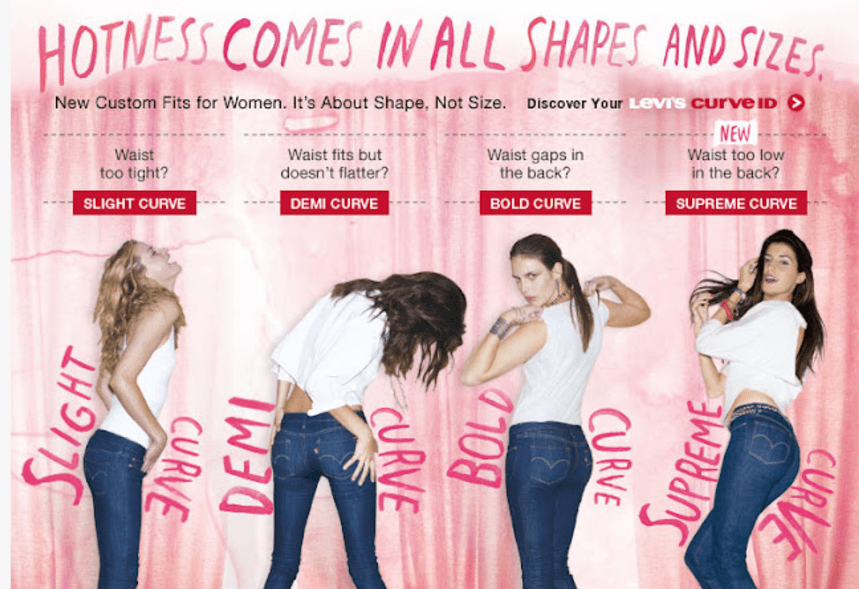
Why Your CRO Best Practices Aren’t Working
If your conversion optimization best practices aren’t working, chances are, it’s because those tactics don’t align with your audience's preferences.
It’s a story we hear often.
The ages and personalities change, the products change, but the problem behind the scenes is constant.
The CMO is aware of the importance of a strong conversion rate optimization strategy, and the company is adhering to CRO best practices – yet conversions are dismal, and ROI is suffering.
We get called in to help identify and correct the problem, and what we find is more often than not chases back to user experience and something that can make or break your marketing efforts.
It’s a fundamental mistake that’s easy to make, but difficult to see and admit.
The story goes like this…
This thinking error can tank sales and turn ROI upside down
A health products company hired a new editor for their blog. He was fresh out of college, ready to make his mark on the world, and as smart as they come.
There was great hope that this hip fireball would “breathe life into the blog” and bring new energy and vision to the workplace. At least, that was the CMO’s take on the situation. A few old-timers on staff could smell the disaster coming… and come, it did.
Blog visits and interactions soon fell off dramatically. The new editor was funny, a bit quirky, and politically correct… but even loyal fans of the company and the blog didn’t like the change.
The reason for the problem was obvious. It really should’ve never happened… but it’s something we see cropping up over and over again: the new editor not only had no empathy for the target audience – he was way off in his assessment of who the target audience even was.
This company’s bread and butter business came from successful middle-aged women, not from twenty-something college students. That meant that, even though the company prided itself on adherence to conversion rate optimization (CRO) best practices, results suffered because there was poor alignment with customer preferences.
The new guy couldn’t accept that assessment. He insisted that his methods would not only keep the older crowd happy, but would usher in a new era of buyers from the younger generations… all he needed was time to make that turn.
Fortunately, the company didn’t allow him to continue down that path for long. They replaced the blog editor with someone who understood the target audience and could speak their language.
Even though CRO best practices remained in place during the new editor’s tenure, those practices couldn’t stand up against the downturn in user experience.
Once consumers again felt understood, blog-originated conversions began to climb.
CRO best practices will fail if not aligned to consumer desire. Share on XWhy CRO best practices sometimes don’t work
The root of conversions is essentially consumer experience optimization. The more personalized your messaging and features are to your target audience, the better the results.
If your CRO best practices aren’t working, it’s because they don’t align with your audience’s preferences. It’s even possible to get the message right, but fail in the presentation.
If your best practices aren’t working, it’s because they don’t align with your audience's preferences. Share on XFor example, Levi Strauss and Co. created a “Hotness comes in all shapes and sizes” campaign to let their women customers (average size jeans 14-16) know their clothing looked good on all body types, not just on those who typified the common image of “hotness.”
“You’re our customer, so that makes you hot,” is a probable summation of the desired subliminal message Levi’s wanted to achieve.
Makes sense, right?
In a classic miss, though, Levi’s used models for the ads who didn’t look like their target audience at all. There wasn’t a size 16 in the bunch. All were classically pretty and relatively skinny.
The public backlash from the project did succeed at helping promote Levi’s, but not in the desired way. Many women felt Levi’s didn’t understand them at all.

Where to find your target audience
Going back to our initial example – the new blog editor who failed to speak to the company’s audience – don’t miss an important nuance of that situation.
It’s not that the young fireball tried to address a non-existent set of buyers. Twenty-something women can be an excellent customer base for the right brands and products.
Ditto for Levi’s. Women who wear size 4-6 clothing exist, but they shouldn’t be confused with the plus size audience.
A cardinal rule of conversion rate optimization is to make sure you’re optimizing to your audience, not to someone else’s.
Make sure you’re optimizing to your audience, not to someone else’s. Share on XMove beyond best practices
Baseball teams hire pitchers, not quarterbacks.
Both can throw a ball, but the positions aren’t interchangeable. Put a quarterback on the plate during a major league baseball game, and you’re begging for defeat – even if that player adheres to best practices for throwing.
To succeed at conversion rate optimization, you must certainly understand and apply CRO best practices – but you have to apply them in the right way, to the correct audience, at the best time.
Move beyond best practices, study your consumers in depth, then test changes that will improve the experience for the consumers you most need to reach.
Move beyond best practices, study your consumers in depth, then test changes. Share on XDon’t worry about the others. Don’t try to market to everyone.
Know your people, and focus on speaking directly to them.
Looking for help moving beyond best practices to providing an online consumer experience tailored for your customers? Schedule an intro call with The Good today, and we’ll show you three areas your site isn’t connecting with your audience within 15 minutes.
Resources:
- Winning Big in 2017 – 3 Critical Trends in Conversion Optimization
- How to Optimize Conversion Rates with Low Traffic
- Conversion Rate Optimization Essentials: The Master Guide

About the Author
Jon MacDonald
Jon MacDonald is founder and President of The Good, a digital experience optimization firm that has achieved results for some of the largest companies including Adobe, Nike, Xerox, Verizon, Intel and more. Jon regularly contributes to publications like Entrepreneur and Inc.